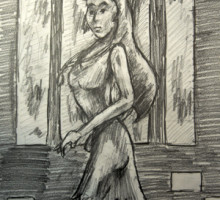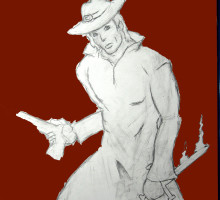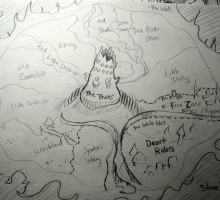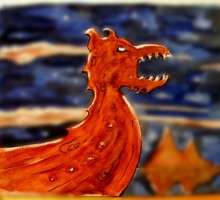Let’s put that title statement in context, as I struggle with a question on my work in progress. The following are facts:
- I have written a book. I think it will be well received by some portion of the people who would read it, but those people don’t yet know it exists.
- I don’t have a pre-existing reading audience.
- People like art.
- I am a strong artist.
- Implication: Adding art to the book might strengthen its appeal and lead to more people giving it a chance (after which, the merits of the book will lead to its success, whatever that may be).
Now, some counterpoints,
- This will require a considerable time investment. (Luckily, I like to do art).
- Some people WON’T find it a positive. They will say they don’t like art with their books, as they prefer to imagine the things in their head. That is what the words should accomplish, they say. This is similar to the distaste readers sometimes have with movies, as the images don’t match their imagining.
- I would argue that this is less of a concern if the art and words are put forward together, as the images are then shaped early and are less rigidly formed.
- Science fiction and fantasy short stories usually have art tied to them, for some reason. Similarly superhero comics.
I think that art broadens the audience, although with longer books maybe less so than with graphic novels. I believe that some people simply have less concrete imaginations than others. I have had some people tell me that they can’t actually visualize images in their head (not saying this is most people, just some). People think differently.
So, my plan is to bring more art into my work, and at least some into this new novel. The biggest drawback for me is really the time investment, as I have very limited amounts of time for all my hobbies (which includes writing, art, sports, and—certainly not least—my family).
We’ll see if the response and return on investment justified doing it more than once. 🙂
_________________
This is one of the rough sketches for StoneDragon. I think the pose is off slightly and I haven’t had time to figure out why, but this is just a bit of art that will eventually work through, become more polished, and grace the pages of my work in progress. I’m hoping to have it out on Amazon by the end of the year, but we’ll see how the art goes. 😀




